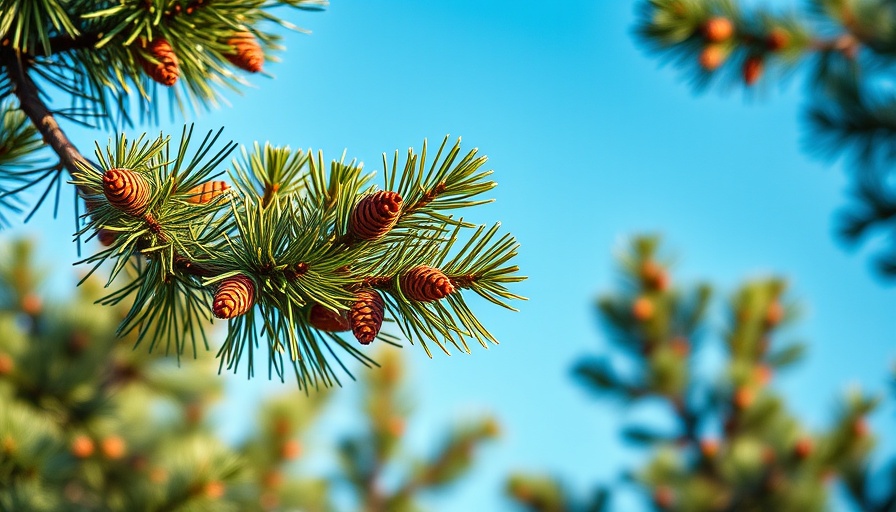
Understanding Why Pine Trees Turn Brown
Pine trees are iconic members of the landscape, known for their stately presence and ability to provide shelter and shade. However, when you start to notice their needles changing from a vibrant green to a rusty brown, it can be concerning. While browning needles can indicate distress for your trees, not all cases signify larger problems. Understanding the various reasons behind this phenomenon is essential for any homeowner looking to maintain a healthy yard.
Seasonal Changes: A Normal Process
It's important to recognize that some pines are not entirely evergreen. Deciduous traits may show in certain species, leading to the natural shedding of older needles in autumn or winter. For instance, Eastern white pines often drop twos to three-year-old needles during the colder months. If your tree is simply shedding less than a third of its needles during this time, it might just be undergoing a regular seasonal cycle.
Identifying Symptoms of Health Issues
If your tree is shedding needles in spring or summer following frost, there may be cause for concern. Understanding the timing and species of your pine can help determine if the browning is part of a normal life cycle or a warning sign like exposure to pests or disease. Proper identification can also assist in understanding the suitable interventions, should they be necessary.
Environmental Factors at Play
Extreme weather can wreak havoc on our beloved pine trees, causing unwanted browning. Deep freezes or prolonged droughts lead to stress responses like needle drop, as trees conserve resources by shedding leaves to minimize exposure. Additionally, factors like improper planting locations can disrupt the health of your trees. If you've noticed browning in specific conditions, such as during a drought or after flooding, consider how these environmental conditions may be affecting your pine.
Addressing Common Problems with Pine Trees
To combat the browning of pine needles, maintain healthy watering practices, especially during drought periods. The soil should be well-drained, as soggy conditions can harm roots. In terms of local action, use techniques like aeration and mulching to protect and improve soil health. Composting pine needles can return nutrients to the earth while mitigating browning issues.
Practical Landscape Solutions for Homeowners
While caring for your pines, consider integrating them into a broader landscaping strategy. Think of starting a backyard planting box in Muskegon to incorporate various plant life that complements your pines, diversifying your yard while helping to maintain a healthy ecosystem. Customizing your approach to outdoor care can be beneficial not just for the aesthetics but also for the health of surrounding fauna and flora.
What You Can Do: Future Thinking
Prepare for upcoming seasons by ensuring that your landscaping practices prioritize sustainable growth and health. Think of building composting barrels in Muskegon or creating elevated planter boxes to support your gardening adventures without stressing existing trees. By maintaining an interactive and nurturing environment, you create a resilient landscape that thrives year after year.
Call to Action
If the health of your pine trees is a concern or if you want to enhance your property’s green space, contact Norther-LawnCare.com today. With their expertise in lawn care, winter plowing, and property management, they ensure your yard remains vibrant and healthy all year round. Call Everett Lucas at 231-450-3414 for tailored solutions!
 Add Row
Add Row 
 Add
Add 


Write A Comment